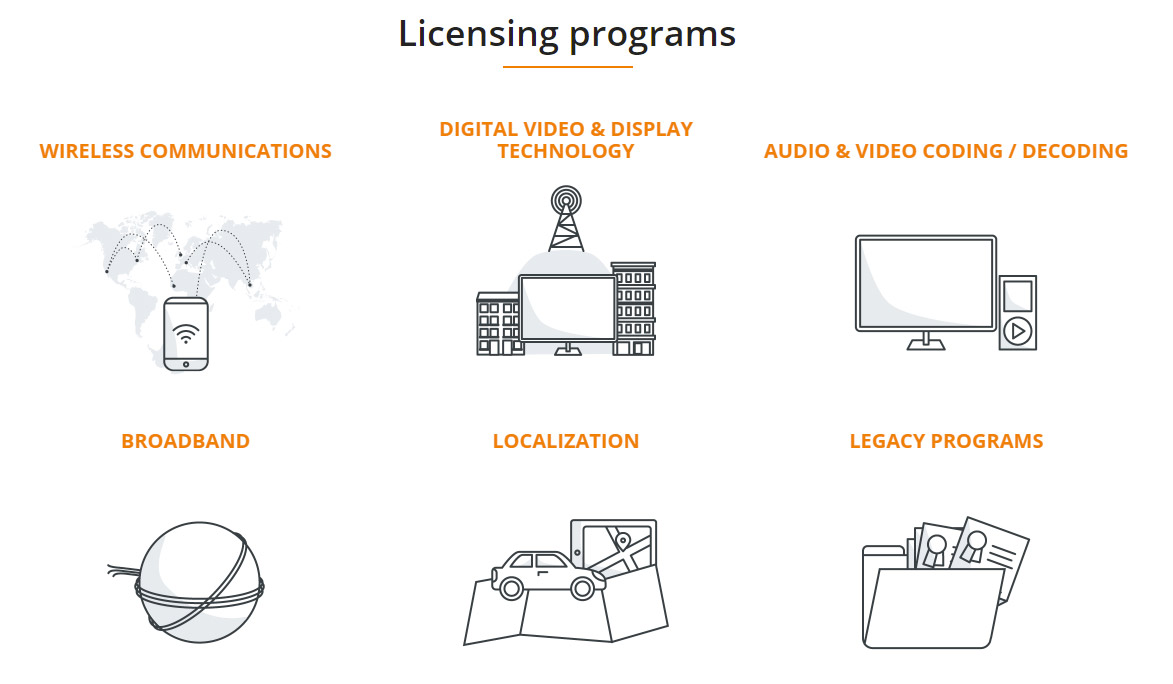The Sisvel Group supports the growth of the technology industry by managing licensing programs, designed to unlock the value of intellectual property rights arising from investments in innovation and at the same time, assists potential licensees by simplifying access to new patented technologies. With the aim of fostering innovation, Sisvel (through Sisvel Technology, the R&D branch of the Group) develops R&D programs alone or with entities in both the public and private sectors. Sisvel has more than 35 years of experience in the IP licensing sector, with a focus on wireless communication, digital video technologies, audio and video coding.
Below is our interview with Fulvio Faraci, President & CEO of Sisvel Technology:

Q: Which are the most important technology trends that Sisvel is focusing on in the future?
A: Sisvel Technology is currently working on three main technology trends which we believe will have a significant impact on our daily lives, in particular, we are focusing on technologies relating to the consumer electronics market. Sisvel Technology is also using its vast expertise on innovation protection and valorization, in a joint effort with top university researchers with the purpose of developing the most innovative applications in these promising fields:
- 5G: will allow a bandwidth connectivity with ultra-low latency enabling applications in a variety of fields (from robotics to automated-guided vehicles). Considering the evolution of the mobile platform, Sisvel Technology is following 5G initiatives collaborating with strategic partners on several research projects. We are mainly working on innovative radio interfaces protocols, Massive MIMO, 3-Dimensional beamforming.
- Internet of Things (IoT): already available on 3/4G networks, IoT will be further enhanced with the 5G network evolution, providing connectivity with very low power consumption. Many industry experts have labeled IoT as “The Next Industrial Revolution” as it will have a huge impact on the way we live, work and travel. IoT will have a major influence on both industrial and above all consumer markets. We are already seeing this trend with the recent explosion of wearable devices and connected appliances that are becoming increasingly more popular with consumers.
- Sisvel Technology is also studying the evolution of the Vehicle-to-everything (V2X) communication system and technology, focusing on Vehicle-to-Vehicle and Vehicle-to-infrastructure communication. In particular, we are focusing on the standards defining vehicular communication such as IEEE 802.11p/WAVE in U.S. and ETSI EN 302 663 in Europe and 3GPP RAN.
 Recommended: Swrve Raises $25M Series D Funding To Help Its Clients Build Highly Effective Mobile Marketing Campaigns
Recommended: Swrve Raises $25M Series D Funding To Help Its Clients Build Highly Effective Mobile Marketing Campaigns
Q: How does Sisvel approach the technology market?
A: Sisvel has a vast experience in facilitating the adoption of technologies on the market by fostering the aggregation of IP holders in patent pools. A patent pool is a program under which patents held by multiple patent holders are licensed in a package by a pool administrator. Negotiation for a patent license through the patent pool is only conducted with the administrator managing the patent pool. From a licensing perspective, this reduces the effort that would be needed to negotiate with each patent holder individually, having a single interface for all licenses. In fact, the purpose of any patent pool is to facilitate licensing of patents by creating a “one stop shop” that reduces transaction and administrative costs. This approach also facilitates patent owners without specific internal licensing skills (i.e. universities and R&D centers) to reach the market.
Thanks to its collaboration with various industrial and academic research centers, Sisvel Technology has been able to facilitate the diffusion of new technologies on the market.
In this scenario, Standardization bodies play an important role by generating the technological foundations of interoperability that have made the success of technologies used in mobile cellular networks or MP3 players (just to give two examples). For this reason, Sisvel Technology takes part in the standardization fora based on strategic areas of interest. This approach has also resulted in Sisvel being able to aggregate patent owners in the formation of patent pools. This licensing model is fundamental in ensuring that the patented technologies incorporated into standards are widely available to everyone.
 Recommended: Simply NUC Raises $8M Series A Funding To Deliver Compact And Fully Assembled Desktop Replacement Systems
Recommended: Simply NUC Raises $8M Series A Funding To Deliver Compact And Fully Assembled Desktop Replacement Systems
Q: How does Sisvel foster innovation through patents?
A: In today’s overall competitive landscape, R&D activities are becoming more complex and extremely expensive, and many companies face challenges to secure funding to support these activities. Whilst in the past Intellectual Property was mainly considered to be a legal tool to create a competitive barrier of entry in the market, today it represents an important asset to be valorized as it is considered to be one of the main assets of the company. It has indeed become extremely important to exploit IP rights to remunerate the R&D investments and to generate additional revenue streams that can fund new business development and innovation.
Through licensing, revenues from royalties for the use of patented technology can be re-invested in R&D generating new innovation; we can call this process “The Inventive Loop”. In fact, this creates a self-sustaining cycle in which the results of previous innovation can help fund new research, generating a virtuous cycle, in which intangible assets acquire a tangible economic value. Through IP licensing, the Sisvel Group provides companies and R&D centers with a new revenue stream that can be reinvested to support innovation through R&D activities.
It is fundamental that this innovation cycle is not broken. Companies, Universities, research centers and SMEs, investing in innovation should have the means and legal protection to effectively monetize innovation and to support development and growth.

